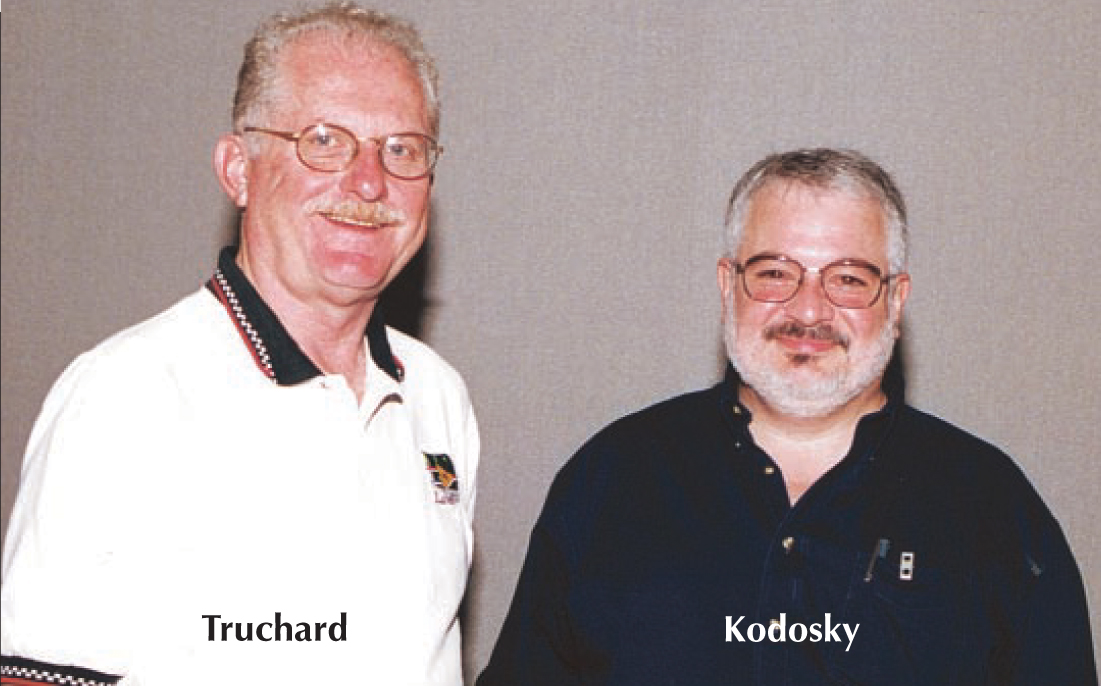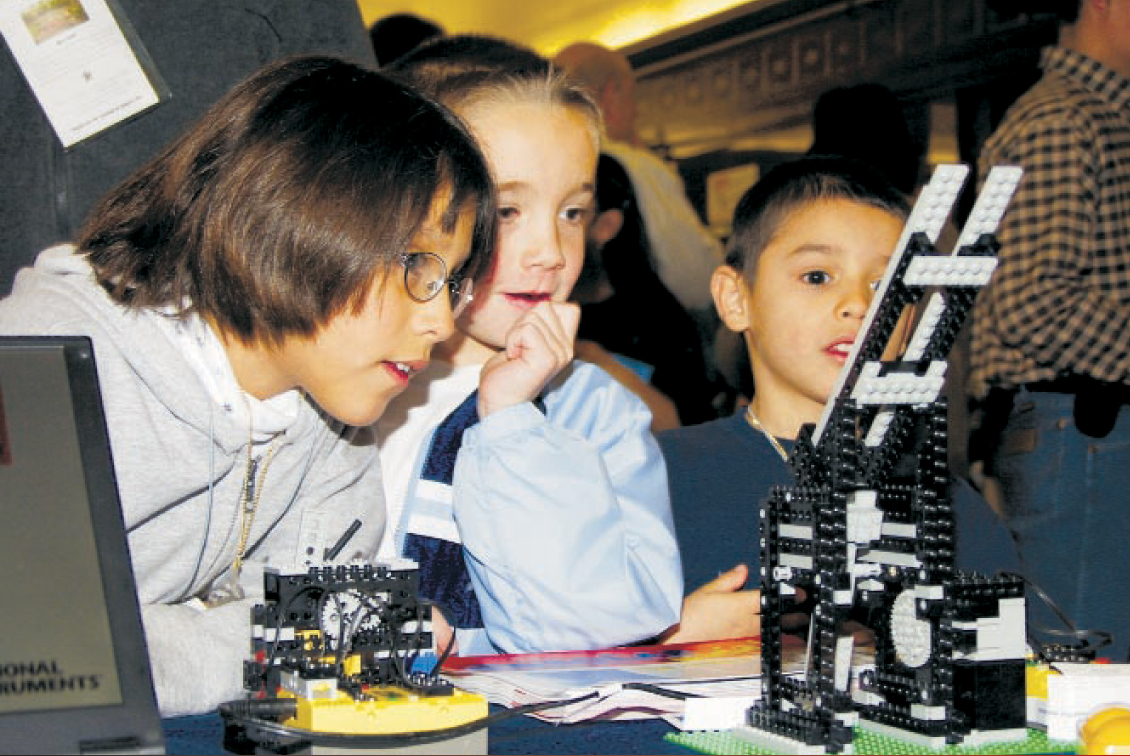Taking Measure With Hardware and Software
DOI: 10.1063/1.1784293
“You could start a company.” That offhand comment by Jim Truchard got Jeff Kodosky and Bill Nowlin thinking. Within days, Truchard and his two employees at the Applied Research Laboratories (ARL) at the University of Texas at Austin (UT) decided to give it a go. That was in February 1976. By May, the trio had incorporated. Today, National Instruments Corp has annual sales topping $425 million, employs more than 3100 people, sells some 1500 hardware and software products, and, for five years running, has been rated by Fortune magazine as one of the 100 best companies to work for.
At ARL, Truchard headed an underwater acoustic measurements lab. “I had about two dozen different projects, all the way from basic acoustics to pragmatic testing of military sonar beam formers,” he says. Truchard went into science because of Sputnik. “I was right on the cusp of that movement. We were all taking Russian and physics,” he says. He earned bachelor’s and master’s degrees in physics and did his PhD—on a nonlinear parametric acoustic receiving array—in electrical engineering, all at UT. Kodosky and Nowlin both worked part-time for Truchard while enrolled at UT. Nowlin earned a master’s in electrical engineering and Kodosky, who has a bachelor’s in physics from Rensselaer Polytechnic Institute, worked toward a PhD; he drifted between theoretical high-energy physics and computer science but did not complete the degree.
‘It pays to be naive’
National Instruments’ first product was a general purpose interface bus, the GPIB-11, which connected instruments to the then popular PDP-11 minicomputer. Says Truchard, “HP [Hewlett-Packard Co] had come out with an interface that worked with their programmable calculators. So we thought there was an opportunity to start a company by building an interface to computers by other manufacturers.”
“We thought we had this great idea for a paper design. It was clear everybody was going to want one of these,” laughs Kodosky. “It really pays to be naive when you are starting a company.” The partners got a loan from “a bank that didn’t laugh us out of the office,” he adds. “Ten thousand dollars—that was our capitalization.”
The partners’ first proposals for a company name, including permutations of their initials, were rejected by the Texas Secretary of State. “We had an emergency meeting and over beer we put down everything that came to mind,” recalls Kodosky. “Combinations of general, national, Austin, Longhorn, computers, systems, measurements, instruments….” Their first choice was “National Instruments,” but they were surprised when they got it. “We were sure it would be too close to existing names,” Kodosky says. “It helped out in the early days, because people thought we were bigger than we were. It works well in other countries, too.”
For the first few years, Kodosky, Nowlin, and Truchard kept their day jobs. At first, their only computer rotated from one of their homes to the next, “depending whose wife was getting annoyed or worried about the clutter,” says Truchard. Early on, they rented a small office. “There was a little bit of a psychological disconnect,” says Kodosky. “Here we had secure jobs at ARL while moonlighting at NI, and these people working for us were dependent on us for their livelihood.” Sometimes, he adds, “we had to dip into our own wallets to pay their salaries.” National Instruments got free advertising through new-product announcements in trade magazines. Says Truchard, “I would read to learn what the magazine wanted—bits and bytes, physical measurements, whatever. Then we custom wrote press releases for each magazine. Most of them got published almost verbatim.”
About a year after starting the business, they began shipping out GPIBs, selling four in 1977—the first one to a US Air Force base in San Antonio. In 1978, their sales totaled $79 000 and in 1979, $300 000. That year, says Truchard, “we made a $60 000 profit. We turned around and bought Jeff a computer.” The company’s growth was exponential, adds Kodosky, “but it started from such a small number.”
The partners took the company public in 1995, but the three of them still own a third of the shares. These days, Kodosky’s title is business and technology fellow and he spends his time brainstorming and hacking at code. Truchard is the president and CEO, and Nowlin retired in 1996.
A spreadsheet for science
For more than a decade, National Instruments’ flagship product has been LabVIEW, a graphics-based software program for acquiring, analyzing, and displaying data. Work on the program began in 1983. “We had this suite of products for different computers and instruments—extenders and testers and whatnot, and we were trying to figure out what to do next,” Kodosky says. “We decided we should start addressing the next-level problem: Now that everyone could easily connect their instruments to their computers, the big stumbling block was writing software to automate their measurements.”
“Jim quickly came up with a good model for what we were trying to accomplish,” Kodosky adds. “He said we were going to do something for scientists and engineers that was like a spreadsheet for financial people. It was great to have that vision, but where to start?”
They started by renting space off-site so Kodosky wouldn’t get bogged down in the day-to-day running of the business. “Two offices were available,” recalls Kodosky. “One had a wall with windows that looked out onto a pool. The other was a windowless room. We opted for that one, because I figured it would be less distracting.”
About a year later, Kodosky had a breakthrough when his brother-in-law sat him down at a Macintosh computer. “It was kind of a life-changing experience, realizing that the graphical mechanism with windows and a mouse was a new way to interact with a computer,” says Kodosky. “If you are using software, you type cryptic commands into a line-oriented thing and wait for it to churn. You can’t discover your way through software. But with the Macintosh’s graphical approach, you could actually discover how to use software. I didn’t know yet how this approach would fit in with what we were trying to accomplish, but it really set the wheels in motion. A few additional months of brainstorming led to the definition of LabVIEW.”
With the program plus plug-in cards, Kodosky adds, everything upstream of an experiment’s sensor—oscilloscopes, multimeters, and other devices—can be simulated on a personal computer. “We call that virtual instrumentation.”
Company culture
Studies suggest that it’s the intangibles that distinguish excellent companies from merely very good ones, Kodosky says. “Financial performance is crucial. But what really differs is morale, motivation, enthusiasm, value systems, and things like that—things there is no metric for.” In fact, the founders of National Instruments had these things in mind from the beginning—Truchard had even made a list of ways to create a good workplace environment. “We started with a lot of ideals,” he says. “I always tell people that the reason I started the company was because I didn’t see a job I wanted in Austin, and I didn’t want to leave Austin.”
Kodosky credits Truchard with guiding the company’s development. As examples, he notes that National Instruments invested about $10 million in LabVIEW—at a time when annual sales were only a quarter of that. And during the economic downturn in 2000, the company actually hired engineers and upped R&D spending, reasoning that the investment would be good for future growth.
In the past 10 years, says Kodosky, “we came to realize the value of the culture we had built just because of our personal views and goals, and that it was worth preserving.” For example, he says, “one of the things we do is try to find a role that really makes [each employee] shine. It’s common sense, but few companies do it.”
The flexibility starts at the top. Says Truchard, “I am pretty absent-minded. But I have always surrounded myself with people who were organized.” Adds Kodosky, “I managed a team for awhile. I gave that up years ago. I found someone who is doing a superb job. Management is not my interest or skill. I like inspiring people.”
Lately, Kodosky and Truchard have been directing some of that inspiration toward education. In 1997, with Tufts University and LEGO®, National Instruments founded RoboLab, a LEGO-and LabVIEW-based classroom curriculum for kids to learn about engineering. Around the same time, Kodosky helped start UTeach, a program at UT to attract and prepare science majors to become K–12 teachers.
Physics intuition
Both Kodosky and Truchard point to their physics training as playing a role in their success with National Instruments. Says Truchard, “Acoustical measurements are fairly tricky, and it happens to be a smaller area where you didn’t have off-the-shelf equipment. You had to build equipment. That background, and the measurements themselves, created a basis.” What’s more, he adds, “the physics background helps create good intuition. I think having solved differential equations and learned about gradients, you know how things are going to work out. I’ve always felt it helped me develop intuition about business.”
In leaving academic research, says Kodosky, “we took a giant step back from what we were working on. ARL was cutting edge. Now it was customers who were doing the interesting experiments.” Still, he and Truchard say they have more impact on science by supplying tools than they would have had as researchers. “We can have a nonlinear effect on the productivity of the science and engineering community. There is plenty of anecdotal evidence that our virtual instrumentation can make people 5 to 10 times as productive,” Kodosky says. “I personally would find it frustrating [to do research] because it’s slow, but dropping by a customer’s site every couple of years is fun. We live vicariously through them.”

NATIONAL INSTRUMENTS


Building robots with programmable LEGO® bricks and using software to control them forms the basis of RoboLab, an educational outreach effort in which National Instruments is involved.
NATIONAL INSTRUMENTS

More about the Authors
Toni Feder. American Center for Physics, One Physics Ellipse, College Park, Maryland,US . tfeder@aip.org
